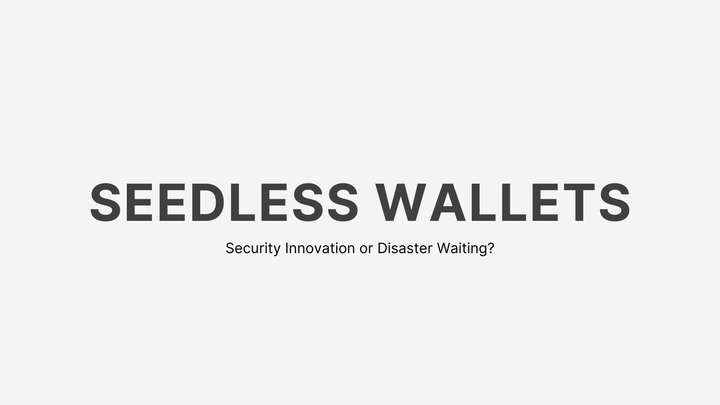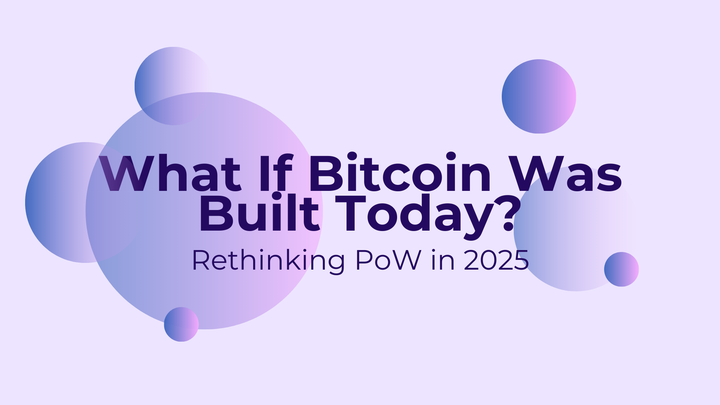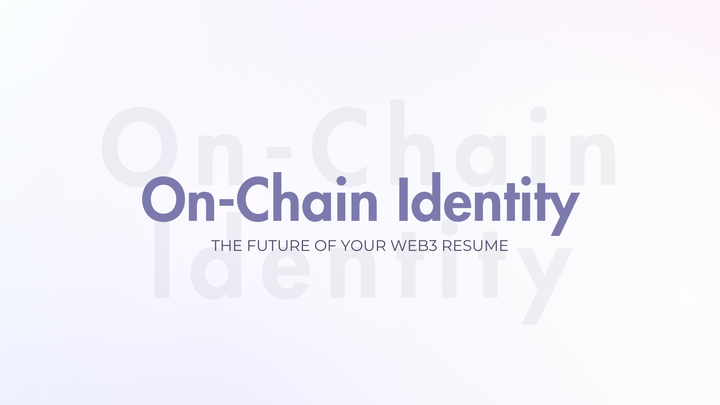Mitosis Tokenomics: A Deep Dive into the Ecosystem-Owned Liquidity Blockchain
Introduction Mitosis is a groundbreaking Layer 1 blockchain that’s shaking up decentralized finance (DeFi) with its Ecosystem-Owned Liquidity (EOL) model. Launched in 2023 from its base in Panama, Mitosis tackles the fragmentation and complexity of multi-chain DeFi environments, offering liquidity providers (LPs) a streamlined way to manage assets across networks like Ethereum, Arbitrum, Scroll, and Optimism. By introducing modular liquidity protocols and tokenized assets called miAssets, Mitosis empowers both retail and institutional investors to optimize yields and influence the ecosystem’s direction through governance. With over $80 million in Total Value Locked (TVL) within three months of its mainnet launch and a $7 million seed round backed by heavyweights like Amber Group and Foresight Ventures, Mitosis is gaining traction fast. This article dives into the tokenomics of Mitosis, exploring the $MITO token’s role, its distribution strategy, incentive mechanisms, and the risks and opportunities that lie ahead. What Is Mitosis and Why Does It Matter? At its core, Mitosis is about simplifying liquidity provision in a world where DeFi can feel like navigating a maze. Traditional LPs face choice overload, juggling multiple chains, protocols, and yield opportunities, often with fragmented rewards. Mitosis’s EOL model flips this on its head by pooling liquidity into unified vaults, allowing users to deposit assets like eETH or weETH and receive miAssets (e.g., meETH) at a 1:1 ratio. These miAssets can then be used across the Mitosis ecosystem for staking, lending, or yield farming, all while earning governance power and rewards. The protocol’s Matrix Vault, a flagship feature, partners with top DeFi platforms like Ether.fi and Symbiotic to deliver transparent, exclusive yield opportunities. Mitosis operates as a Layer 1 blockchain, leveraging Hyperlane for cross-chain messaging and restaked ETH for security, ensuring seamless interoperability across supported networks. This modular approach addresses a critical pain point in DeFi: how to make liquidity work harder across chains without locking assets or sacrificing efficiency. The project’s rapid growth—$80 million in TVL and counting—shows it’s resonating with users, while its seed funding signals strong belief from investors like Big Brain Holdings and GSR. The Heart of Mitosis: The $MITO Token The $MITO token is the linchpin of Mitosis’s ecosystem, serving as both a governance tool and a reward mechanism. While the token hasn’t launched as of May 2025, Mitosis has teased a Token Generation Event (TGE) following the conclusion of its testnet campaign in December 2024. Here’s what $MITO brings to the table. Governance Power $MITO tokens give holders a voice in shaping the Mitosis ecosystem. LPs who deposit assets into Mitosis Vaults receive miAssets, which can be used to vote on key decisions, like which DeFi protocols to integrate or how to allocate liquidity across chains. This community-driven model levels the playing field, letting retail LPs wield influence typically reserved for institutional players. It’s a bold move to democratize DeFi governance, ensuring the ecosystem evolves in line with user priorities. Incentives for Liquidity Providers $MITO tokens are the carrot dangled for LPs who contribute to Mitosis Vaults. By holding miAssets, users earn MITO Points, which are expected to convert to $MITO tokens post-TGE at a 70/30 split—70% based on points, 30% tied to other metrics like deposited assets. This incentivizes long-term participation, as LPs who stick around and engage actively stand to gain the most. The rewards don’t stop at $MITO; users also earn points from partner protocols like EigenLayer and ether.fi, sweetening the deal. Cross-Chain Utility What sets $MITO apart is its role in enabling cross-chain functionality. miAssets, backed by $MITO rewards, can be deployed across multiple chains for various DeFi strategies. This flexibility means LPs can maximize yields without being tethered to a single network, a game-changer in a fragmented DeFi landscape. Whether it’s staking on Arbitrum or lending on Optimism, $MITO’s utility drives demand by making liquidity work smarter. Breaking Down the Tokenomics Mitosis hasn’t fully unveiled its tokenomics yet, with a detailed release expected by June 2025. Still, we can piece together a picture based on industry norms and insights from sources like CoinGecko and CryptoRank.io. Token Supply and Distribution The total supply of $MITO tokens remains under wraps, but Mitosis is steering clear of a public sale or initial coin offering, opting instead for a community-focused distribution. A significant chunk of tokens will likely go to airdrop participants through the Mitosis Expedition campaigns, rewarding users who deposit assets and engage in mainnet and testnet activities. The initial circulating supply at TGE is expected to be minimal—potentially 0% of the Fully Diluted Valuation (FDV)—to avoid flooding the market and tanking prices early. Other allocations will likely include: Team and Investors: With a $7 million seed round, some tokens are earmarked for the founding team, advisors, and investors like Amber Group. These are typically locked up for 12–36 months to align incentives. Ecosystem Development: A reserve for partnerships, validator rewards, and integrations with protocols like Hyperlane will support growth. Treasury: A portion will fund future development, marketing, and community initiatives, ensuring long-term sustainability. Vesting and Price Stability To keep volatility in check, Mitosis is likely to enforce vesting schedules. Team and investor tokens might be locked for one to three years, while airdrop tokens could have shorter cliffs to encourage early adoption. This gradual release helps stabilize the token’s price post-TGE, a common strategy in DeFi to avoid the dumps that plague overhyped launches. Fully Diluted Valuation and Market Cap Without a public sale, it’s tough to pin down Mitosis’s FDV or initial market cap. However, with $80 million in TVL and strong investor backing, the project’s valuation could be competitive in the DeFi space. A low initial circulating supply would keep the market cap modest at launch, giving $MITO room to grow as adoption scales. What Drives $MITO’s Value? The $MITO token’s value hinges on its utility and demand drivers: Governance Appeal: LPs who want a say in liquidity allocation will hold $MITO, creating organic demand. Yield Opportunities: Rewards for holding miAssets and contributing to vaults encourage users to stay engaged. Cross-Chain Flexibility: The ability to use miAssets across chains makes $MITO a linchpin for multi-chain DeFi, boosting its utility. Speculative Hype: Airdrop campaigns and partnerships with protocols like Symbiotic fuel excitement, drawing speculative interest pre-TGE. The Expedition Campaigns: Fueling Adoption of Mitosis’s airdrop campaigns, dubbed Expeditions, are the engine behind its token distribution and community growth. These campaigns, split between mainnet and testnet, reward users with MITO Points that will convert to $MITO tokens post-TGE. Mainnet Expedition Kicked off in April 2024, the mainnet campaign targets users depositing Liquid Restaking Tokens (LRTs) like weETH and eETH into Mitosis Vaults. Participants earn miAssets and MITO Points based on deposit size and duration, with bonuses like a 1.15x points multiplier for using referral codes (e.g., “W4EWD1”). The campaign, structured in four epochs, has no deposit cap in its final phase, encouraging whale-sized contributions. LPs also earn points from partner protocols, making it a multi-layered incentive program. Airdrop Mechanics The airdrop’s 70/30 split rewards MITO Points most heavily, but metrics like deposited assets also factor in. Users who engage in both mainnet and testnet campaigns can stack rewards, with badges and referrals adding bonuses. The TGE will convert points to $MITO tokens, though the exact rate is still undisclosed. This strategy not only bootstraps liquidity but also builds a loyal community, aligning with Mitosis’s decentralized ethos. Economic and Security Foundations Mitosis’s tokenomics rest on solid economic and security pillars: Crypto-Economic Security: Restaked ETH and a Proof-of-Stake validator set secure cross-chain messaging, with $MITO tokens rewarding LPs who support Hyperlane. Capital Efficiency: miAssets let LPs earn yields across chains without locking assets, a leap forward from clunky cross-chain transfers. Community Governance: The EOL model puts liquidity allocation in the hands of $MITO holders, fostering transparency and decentralization. Risks to Watch No DeFi project is without risks, and Mitosis is no exception: Smart Contract Bugs: As a new protocol, Mitosis’s vaults could be vulnerable to exploits. No public audits have been shared, which raises red flags. Price Volatility: Airdrop-driven hype could lead to price swings post-TGE, especially if too many tokens hit the market early. Competition: Mitosis faces off against giants like Uniswap and Layer 2 solutions like Arbitrum. Sustained TVL growth is critical. Regulatory Hurdles: Based in Panama, Mitosis might face scrutiny in stricter jurisdictions, impacting token distribution or adoption. Team Track Record: Some critics point to the team’s lack of top-tier DeFi experience, which could affect execution. Opportunities on the Horizon Despite these risks, Mitosis’s tokenomics open exciting doors: Cross-Chain Leadership: By solving liquidity fragmentation, Mitosis could dominate the multi-chain DeFi space. Community Momentum: Airdrops and governance empower users, fostering a dedicated community that drives adoption. Strategic Partnerships: Ties with Ether.fi, Symbiotic, and Hyperlane boost credibility and functionality. Scalability: The modular design aligns with the rise of Layer 2 and modular blockchains, positioning Mitosis for growth. How Mitosis Stacks Up To put Mitosis in context, let’s compare it to other DeFi heavyweights: Uniswap: Uniswap’s UNI token focuses on governance for its DEX, while $MITO’s cross-chain rewards offer broader utility for LPs seeking diversified yields. Aave: Aave’s lending model is powerful, but Mitosis’s miAssets provide more flexibility than aTokens, which are tied to specific pools. Curve: Curve’s stablecoin focus is similar to Mitosis’s EOL model, but Mitosis’s cross-chain capabilities give it an edge in multi-network environments. A Critical Look at Mitosis’s Tokenomics Mitosis’s tokenomics shine in their innovation but face hurdles: Strengths: The EOL model and miAssets tackle real DeFi pain points, while airdrops and partnerships drive early adoption. Weaknesses: Limited transparency on token supply and vesting, plus unproven audits, could deter cautious investors. Opportunities: Mitosis is well-positioned to ride the wave of modular blockchains and cross-chain DeFi demand. Threats: Competition, regulatory risks, and potential smart contract issues loom large, requiring careful navigation. Conclusion Mitosis is carving a unique path in DeFi with its Ecosystem-Owned Liquidity model and the forthcoming $MITO token. By enabling cross-chain liquidity, empowering community governance, and incentivizing participation through airdrops, Mitosis is poised to make waves. Its $80 million TVL and $7 million seed round reflect strong early momentum, but challenges like smart contract risks and market competition demand vigilance. As the TGE approaches and detailed tokenomics emerge by June 2025, Mitosis has a shot at becoming a cornerstone of multi-chain DeFi—if it plays its cards right.
https://docs.mitosis.org/learn/introduction/what-is-mitosis https://blog.mitosis.org/ https://mitosis.org/



Comments ()